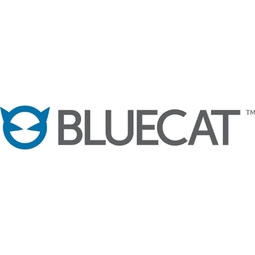公司规模
Large Corporate
地区
- Europe
国家
- Germany
产品
- BlueCat Address Manager
- BlueCat DNS/DHCP Server
技术栈
- DNS
- DHCP
- IPAM
实施规模
- Enterprise-wide Deployment
影响指标
- Productivity Improvements
- Cost Savings
技术
- 网络与连接 - 网络管理和分析软件
适用行业
- 教育
服务
- 系统集成
- 培训
关于客户
Hochschule Ostwestfalen-Lippe University of Applied Sciences (HS-OWL) is located in North-Rhine Westphalia, western Germany. The university has three campuses in the cities of Lemgo, Detmold, and Höxter. HS-OWL's strong technological and scientific departments are complemented by other courses of study including ecology, sociology, economics, design, and language instruction. The university's network environment, including routing, switching, telephony, and wireless, runs on Cisco. The university's network encompasses about 10,000 active IP addresses on campus and serves the needs of some 6,000 students and 600 staff.
挑战
Hochschule Ostwestfalen-Lippe University (HS-OWL) in Germany was facing challenges with its network environment. The university had a limited IPv4 address space and was using an open source tool to document its IP addresses and networks. However, there was no integration between this tool and the university's DNS and DHCP core network services. The management and maintenance of these separate tools were time-consuming for the IT staff. The lack of integration also increased the risk of a network configuration error causing an outage that would directly impact the university's students, faculty, and staff. The university's network encompasses about 10,000 active IP addresses on campus and serves the needs of some 6,000 students and 600 staff. The DNS, DHCP, and IP Address Management (IPAM) solution selected would have to be scalable to support network growth and include a flexible API to enable integration with the university's existing in-house and custom-built network management tools.
解决方案
HS-OWL began to look for a solution that would introduce automation, IP Address Management (IPAM), and effective permission management to its network. After carefully evaluating several solutions including Infoblox and Alcatel-Lucent VitalQIP, HS-OWL selected BlueCat because of the flexibility and extensibility of the BlueCat Address Manager IPAM solution. The BlueCat solution architecture separates management from core services delivery. With a dedicated management server and separate DNS/DHCP servers, HS-OWL could integrate all of its workflows into the BlueCat IPAM server without affecting its core network services. The BlueCat Web GUI was straightforward and intuitive, which made it effortless to train the university's support staff on using it. In addition, the Web services API enabled HS-OWL to integrate the BlueCat Address Manager server with other network tools and introduce further network automation.
运营影响
数量效益

Case Study missing?
Start adding your own!
Register with your work email and create a new case study profile for your business.
相关案例.

Case Study
Revolutionizing Medical Training in India: GSL Smart Lab and the LAP Mentor
The GSL SMART Lab, a collective effort of the GSL College of Medicine and the GSL College of Nursing and Health Science, was facing a challenge in providing superior training to healthcare professionals. As clinical medicine was becoming more focused on patient safety and quality of care, the need for medical simulation to bridge the educational gap between the classroom and the clinical environment was becoming increasingly apparent. Dr. Sandeep Ganni, the director of the GSL SMART Lab, envisioned a world-class surgical and medical training center where physicians and healthcare professionals could learn skills through simulation training. He was looking for different simulators for different specialties to provide both basic and advanced simulation training. For laparoscopic surgery, he was interested in a high fidelity simulator that could provide basic surgical and suturing skills training for international accreditation as well as specific hands-on training in complex laparoscopic procedures for practicing physicians in India.

Case Study
IoT platform Enables Safety Solutions for U.S. School Districts
Designed to alert drivers when schoolchildren are present, especially in low-visibility conditions, school-zone flasher signals are typically updated manually at each school. The switching is based on the school calendar and manually changed when an unexpected early dismissal occurs, as in the case of a weather-event altering the normal schedule. The process to reprogram the flashers requires a significant effort by school district personnel to implement due to the large number of warning flashers installed across an entire school district.

Case Study
Implementing Robotic Surgery Training Simulator for Enhanced Surgical Proficiency
Fundacio Puigvert, a leading European medical center specializing in Urology, Nephrology, and Andrology, faced a significant challenge in training its surgical residents. The institution recognized the need for a more standardized and comprehensive training curriculum, particularly in the area of robotic surgery. The challenge was underscored by two independent studies showing that less than 5% of residents in Italian and German residency programs could perform major or complex procedures by the end of their residency. The institution sought to establish a virtual reality simulation lab that would include endourological, laparoscopic, and robotic platforms. However, they needed a simulator that could replicate both the hardware and software of the robotic Da Vinci console used in the operating room, without being connected to the actual physical console. They also required a system that could provide both basic and advanced simulation training, and a metrics system to assess the proficiency of the trainees before they performed surgical procedures in the operating theater.

Case Study
Edinburgh Napier University streamlines long-distance learning with Cisco WebEX
• Geographically dispersed campus made in-person meetings costly and inconvenient.• Distance-learning programs in Malaysia, India, and China required dependable, user-friendly online tools to maximize interaction in collaborative workspaces.• Virtual learning environment required a separate sign-in process, resulting in a significant administrative burden for IT staff and limited adoption of collaboration technology.

Case Study
8x increased productivity with VKS
Before VKS, a teacher would spend a lot of time showing a group of 22 students how to build a set of stairs within a semester of 120 hours. Along with not leaving the teacher much time to provide one-on-one support for each student to properly learn carpentry, it also left a considerable amount of room for error. Key information would be misinterpreted or lost as the class was taught in the typical show-and-tell way.

Case Study
Scalable IoT Empowering GreenFlex's Sustainable Growth
GreenFlex, a company that supports sustainable development, decarbonization, and energy efficiency, faced several challenges in its quest to expand its business. The company needed to deploy a robust and sustainable IoT technology to support its growth. It was crucial for them to monitor and control devices at customer sites in a safe and reliable manner. They also needed to integrate devices across a range of communication protocols and gather and act on data to meet efficiency targets. GreenFlex had previously built IoT capabilities into its digital platform, GreenFlexIQ, to monitor and manage customer sites remotely. However, they soon realized that they needed a new platform to support their ambitions. They needed a platform that could scale to connect more devices for production management and make it easier for the operations team to manage devices in the field.







